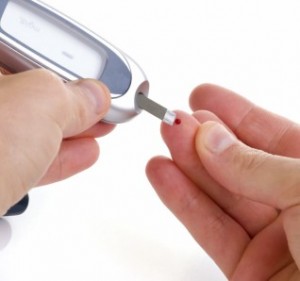Diagnosis of diabetes

If a patient presents with frequency of passing urine, constant thirst, weight loss, tiredness, and found to have sugar in the urine, then the diagnosis of diabetes mellitus is very clear. What a doctor needs to do to confirm the diagnosis is to perform a blood sugar examination.
Many diabetics are discovered when they go for routine medical check up which consists of urine testing. Others are discovered when they consult a doctor for fungal infection of the vulva, recurrent boils, visual disturbances, unexplained weight loss, or even symptoms of pulmonary tuberculosis.

The American Diabetic Association (ADA) and the World Health Organization (WHO) have suggested that in a patient with symptoms of diabetes, a random plasma glucose value of 200 mg/dl or more is diagnostic. This value is enough for diagnosis if found on more than one occasion in an asymptomatic patient as well. There are two ways of diagnosing diabetes namely doing a fasting blood glucose or an oral Glucose Tolerance Test (GTT) when we suspect diabetes mellitus and the random blood glucose is not that high. A fasting blood glucose of over 125 mg/dl is considered diabetic. The patient fasts overnight and next morning a fasting blood specimen is taken. The patient is then given 75 gm of glucose in at least 300 – 900 ml of water. Specimens of blood are then taken at one hour and then at 2 hours after the glucose drink. The one hour post prandial blood glucose level should not be more than 100-180 mg/dl and the two hour post prandial blood sugar should not be more than 80-150 mg/dl.